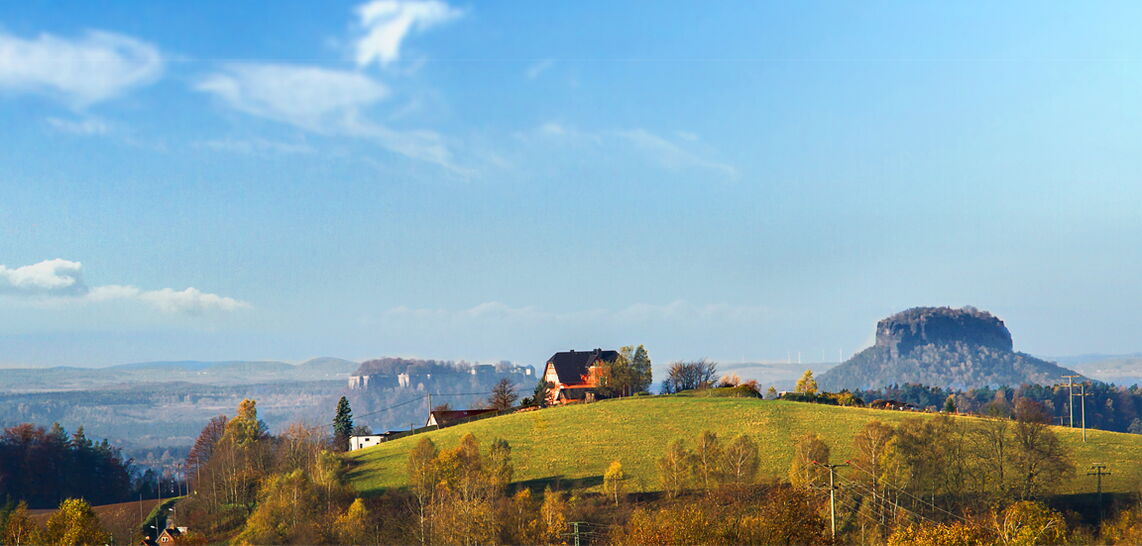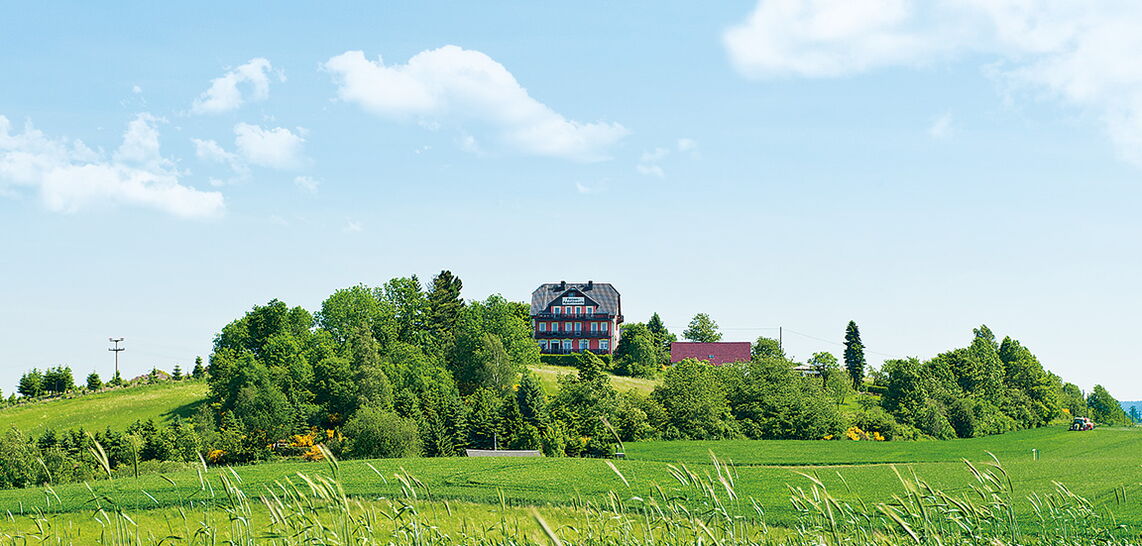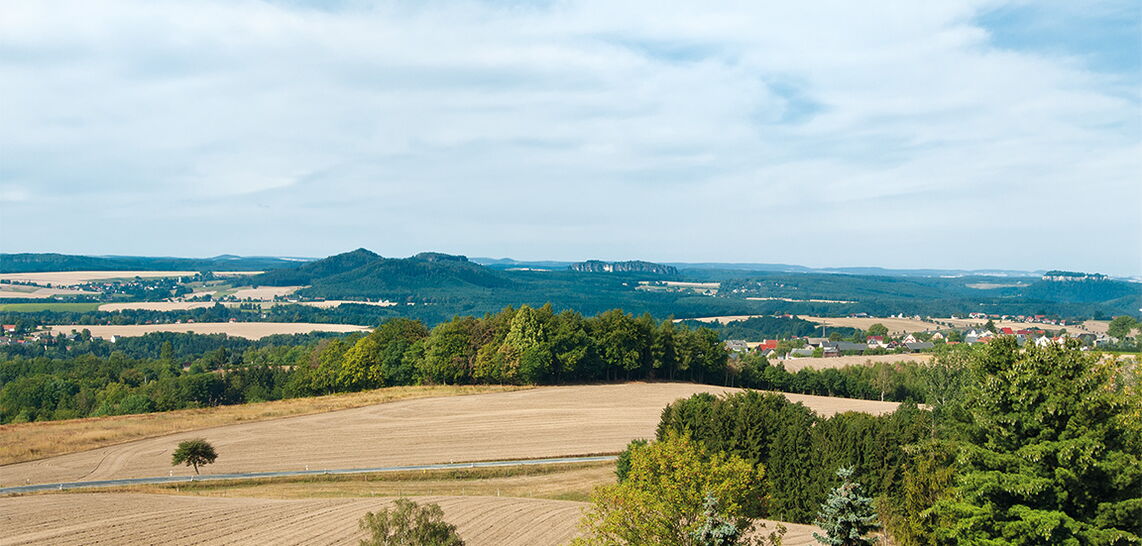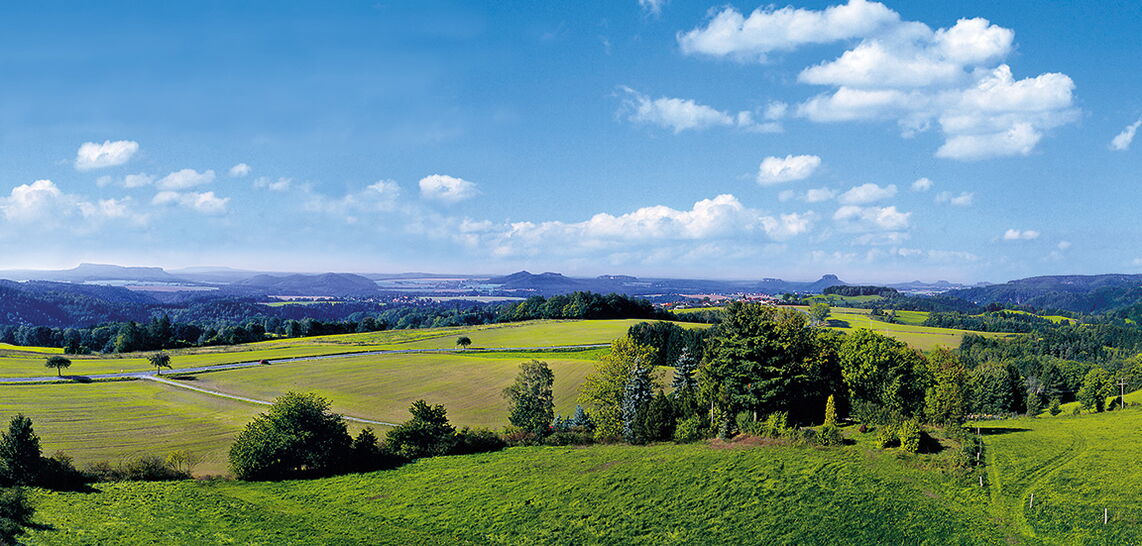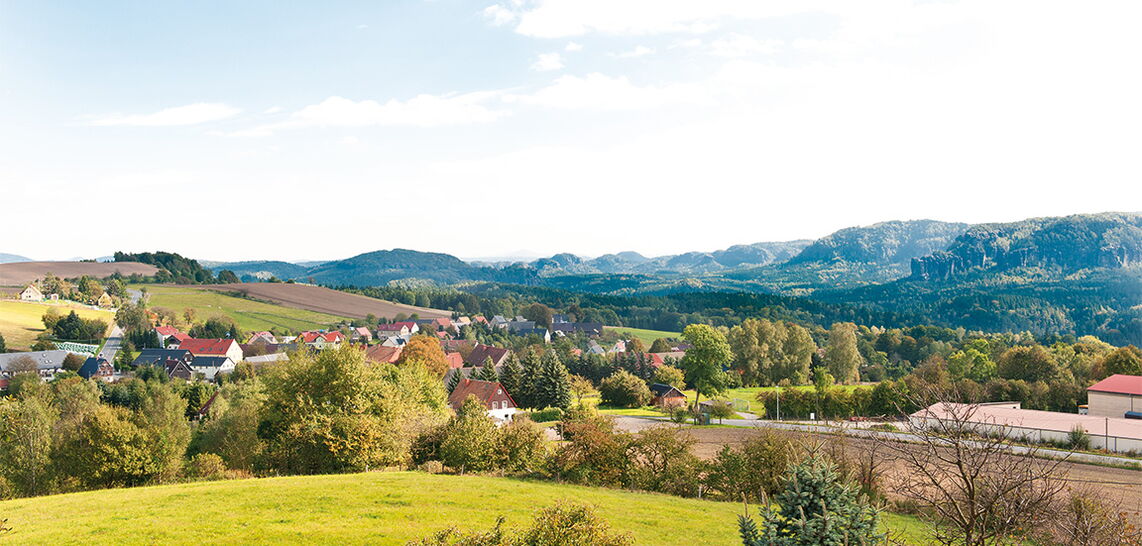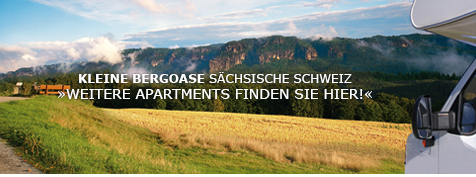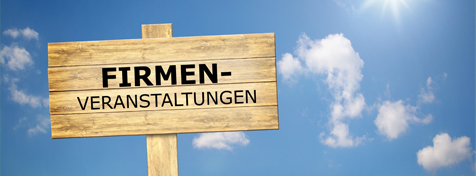The vineyard cottage - History
In 1907, the retired railway employee Karl August Hoke, resident in Mittelndorf, built up a noble inn on the vineyard. The vineyard (332m) whose name derives from "Weidberg" (pastures) was grassland up to this time because of the unfavourable tilling conditions. Its view was already eulogised as "exceedingly amusing and rich" in the "manual of the geography, statistic and topography of the Kingdom Saxony" (Handbuch der Geographie, Statistik und Topographie des Koenigreichs Sachsen" from 1840. In the South and West it covers the panorama of the "sandstone rocks" of Saxon Switzerland and in the North and East the view of the granitic hills of the Upper Lusatia (Oberlausitz) which here geologically incipient.
Hoke had to run into debts during the building of the vineyard cottage and in 1908, it already came up for auction by the bank of Sebnitz (Vereinsbank Sebnitz). The vineyard cottage changed hands quite often. It was made for residence of the loom manufacturer Roscher from the Upper Lusatia (Oberlausitz) and later as holiday home for the employees of the factory until the end of World War II. At the end of the war the vineyard cottage was filled up with refugee families. Polish troops which have been under soviet command seized Mittelndorf and set up an observation and communication station in the vineyard cottage. From 1951 on the vineyard cottage was an apartment house. On 22nd April 1953 it was assigned to the borough council Mittelndorf in the range of a public industrial reform. In 1948 the loom manufacturer was expropriated after all corresponding formalities. Several lodgers lived there until 2002. Due to claims of previous proprietors and financial shortage of the borough council no important investments has been made at the cottage and it was vacant until the purchase of the Balogh family.
We already decided us to give back the primal meaning of a tourist object before purchasing the vineyard cottage.
It would give us great pleasure to welcome you in our apartment house.
Sincere thanks to Irmtraud Hille, home chronicler of Altendorf for giving historical information.

